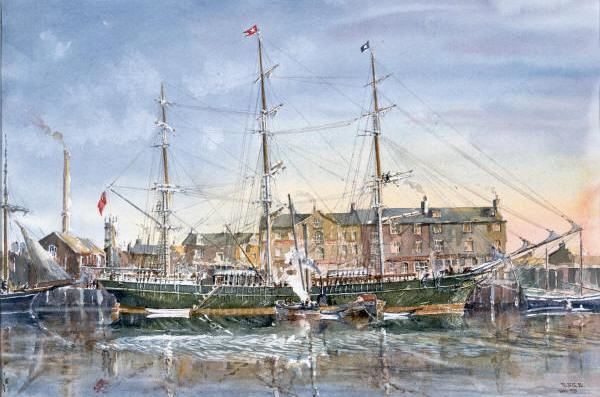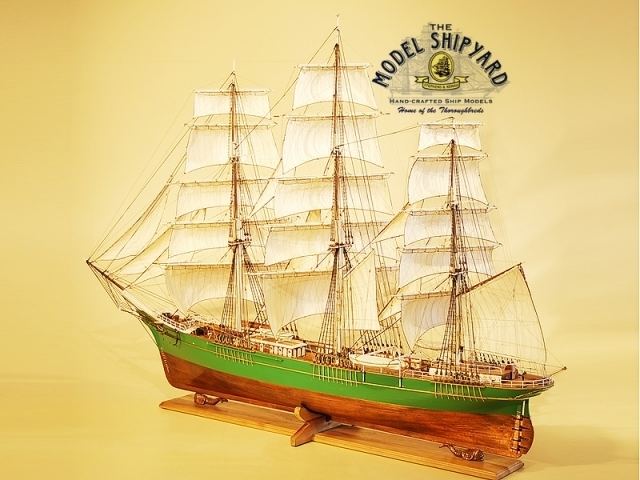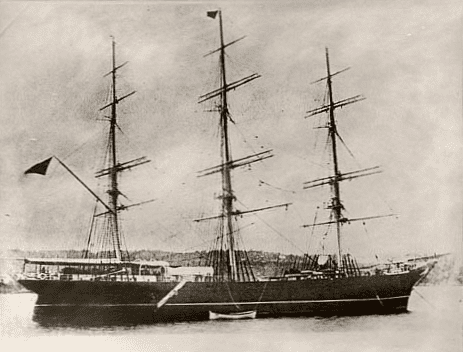Name Thermopylae Launched August 1868 Builder Walter Hood | Tonnage 991 GRT947 NRT Length 65 m Designer Bernard Weymouth | |
 | ||
Name Pedro Nunes or Pedro Nunez Class and type | ||
Thermopylae was an extreme composite clipper ship built in 1868 by Walter Hood & Co of Aberdeen, to the design of Bernard Waymouth of London.
Contents

Construction

Thermopylae was built for the Aberdeen Line, which was founded in 1825 by George Thompson. She measured 212' × 36' × 20.9', with tonnage 991 GRT, 948 NRT and 927 tons under deck. The under deck coefficient was 0,58. Rigged with royal sails, single topgallant and split top-sails.
Records set in tea trade
Thermopylae was designed for the China tea trade, and set speed records on her maiden voyage to Melbourne—63 days, still the fastest trip under sail.
Race with Cutty Sark

In 1872, Thermopylae raced the clipper Cutty Sark from Shanghai back to London. Thermopylae won by seven days after Cutty Sark lost her rudder. From 1882 onward, Thermopylae took part in the Australian wool trade; however, on this route Cutty Sark proved faster.
Naval training ship
In 1897 she was sold to Portugal for use as a naval training ship and renamed Pedro Nunes. On 13 October 1907, the Portuguese Navy towed her down the Tagus river using two warships, and before Amelia de Orleans, Queen of Portugal, she was torpedoed with full naval honours off Cascais.
